Ambient vs. Regenerative vs. Heated
Industrial parts cleaning systems are designed in many different sizes and configurations, based on the part size, production rate, cleanliness requirements, and dryness requirements of the customer’s part. However, the common factors in all parts cleaning systems consists of a minimum of two (2) main processes needed to clean/dry the parts: 1) wet zone(s) (i.e.: wash & rinse) and 2) blow-off system zone. This article will focus on the drying process incorporated into an industrial parts cleaning system.
In most cases, the next manufacturing operation, after cleaning the part, usually dictates the dryness requirement of the part. How the part gets dry depends on multiple factors, such as: 1) part material, 2) part design, 3) temperature of the solution used to clean the part, 4) amount of time the part is exposed within the blow-off zone, and 5) potential use of compressed air to blow moisture out of blind/tapped holes on the part. Not all parts will need to be completely dry upon exiting the cleaning system. Only once all the information on part dryness is obtained from the customer, can the type of blow-off system be determined. There are three (3) blow-off system designs that could be used: ambient, regenerative, and heated.
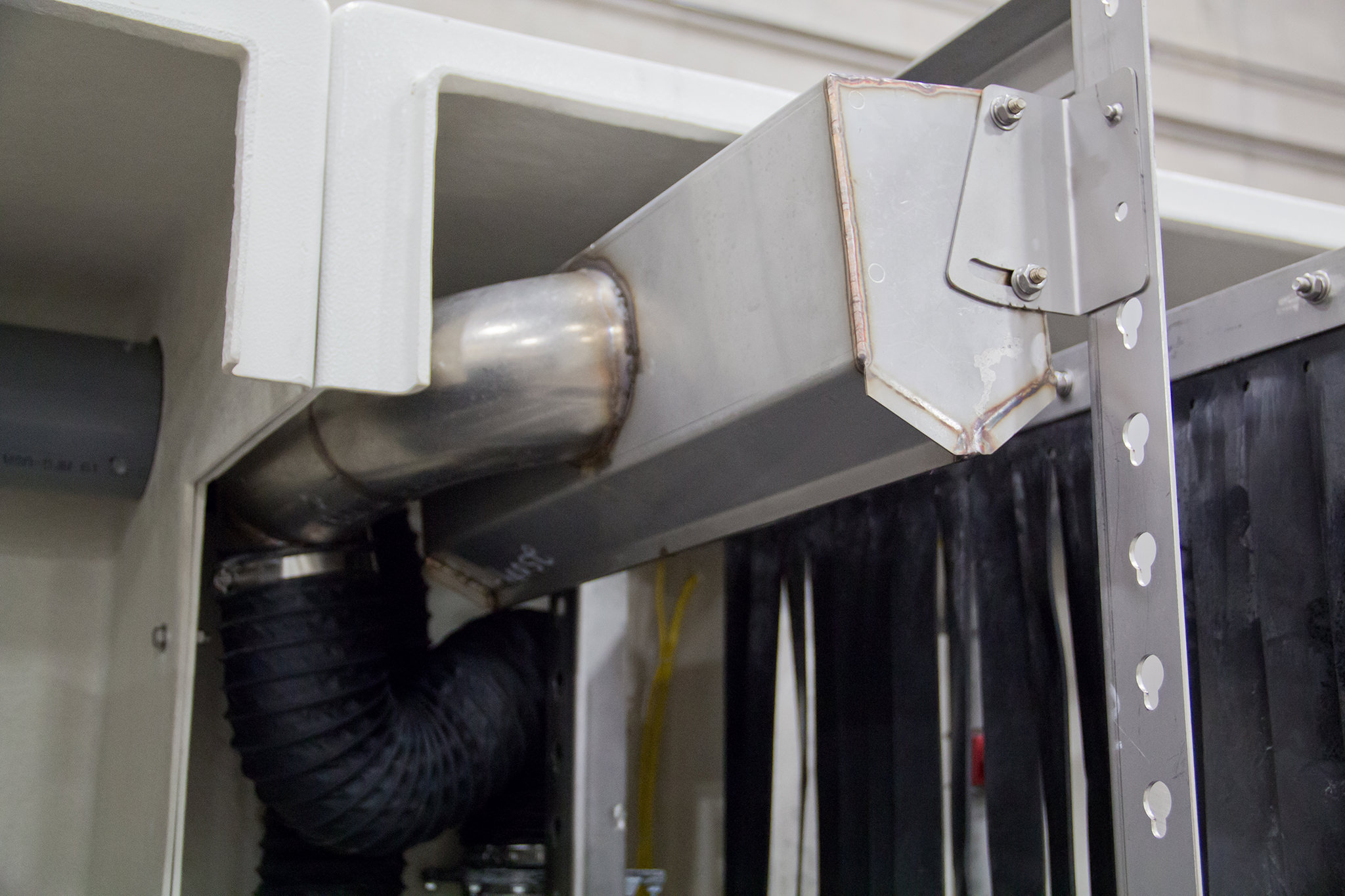
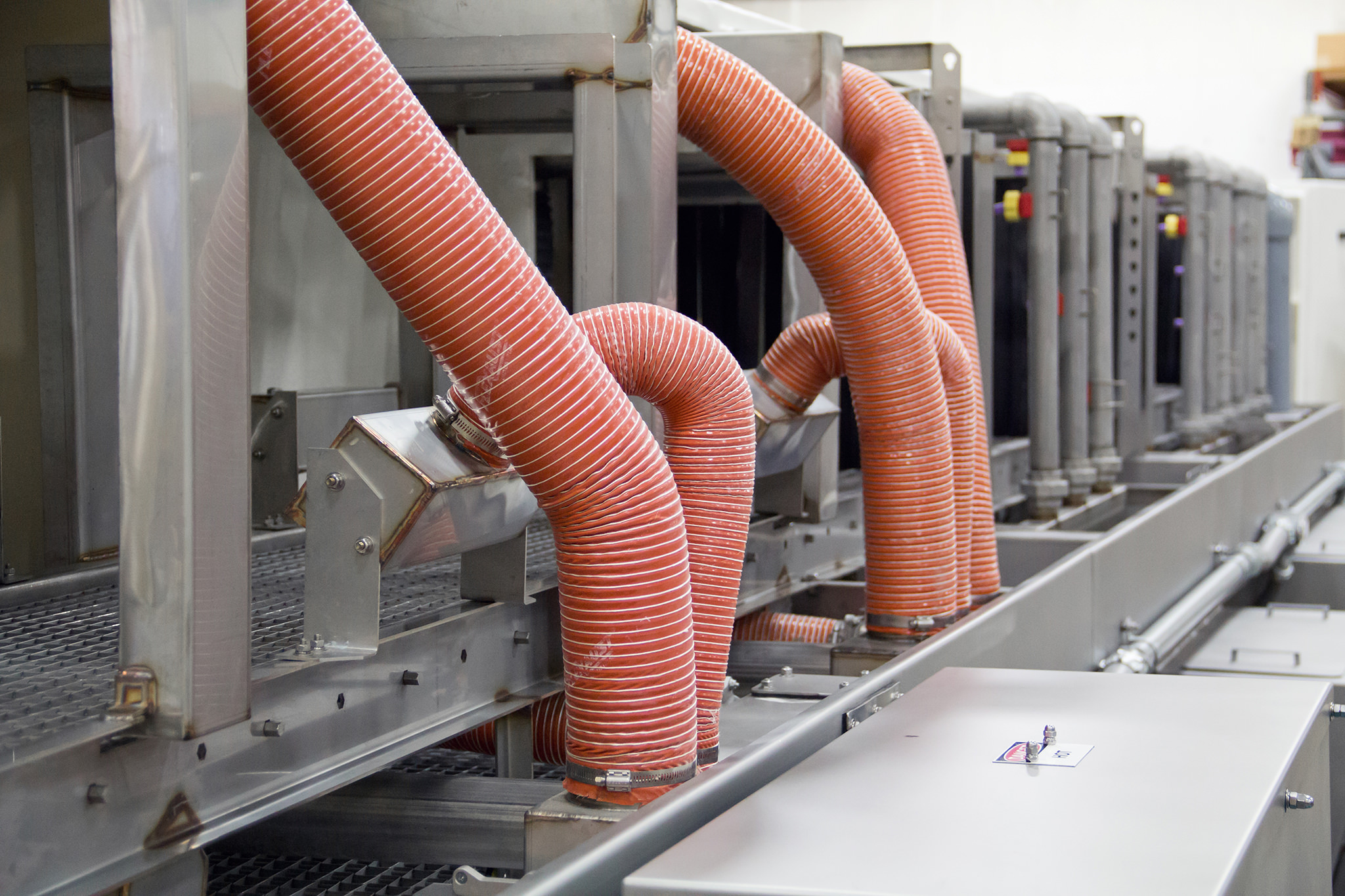
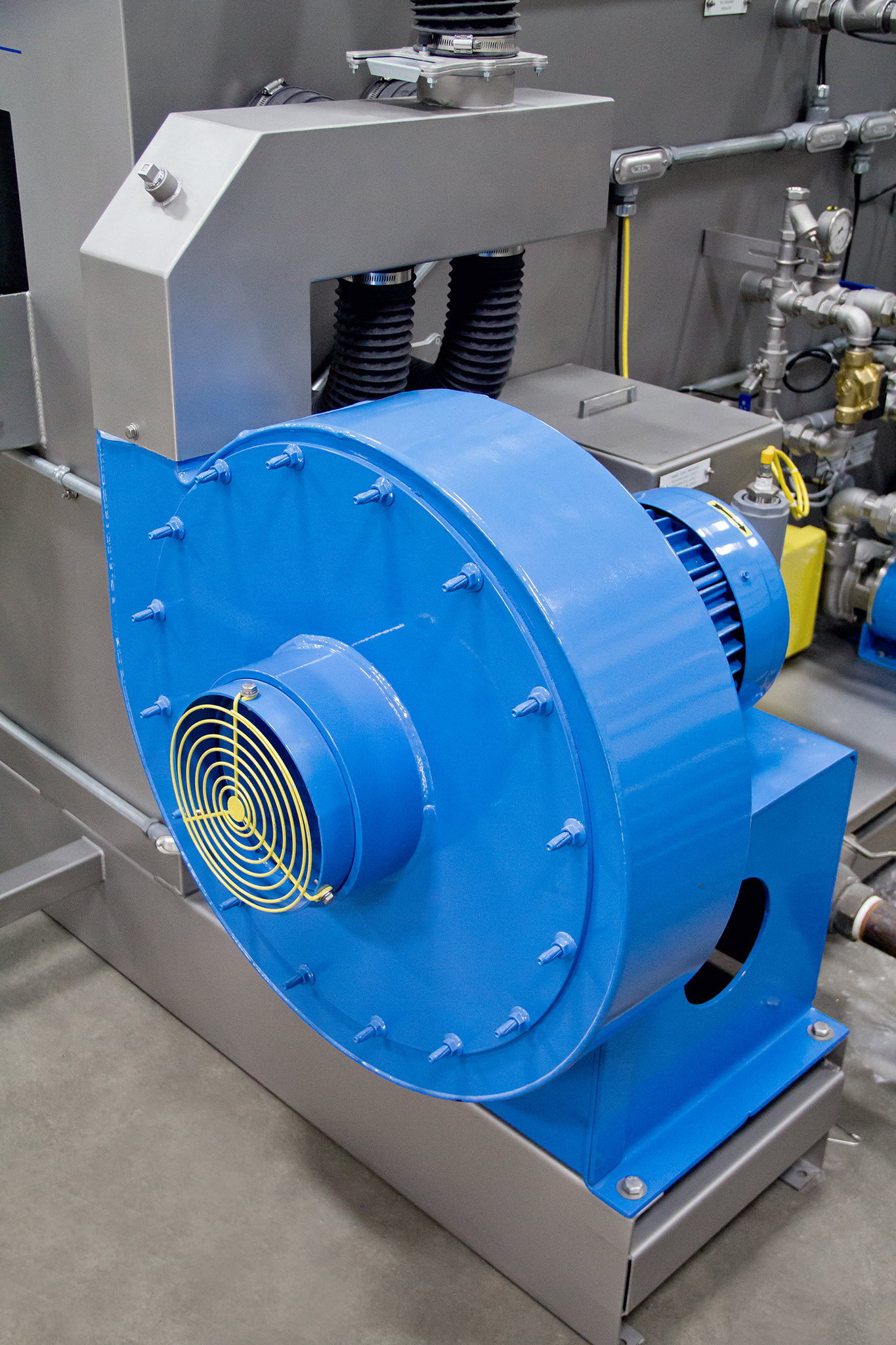
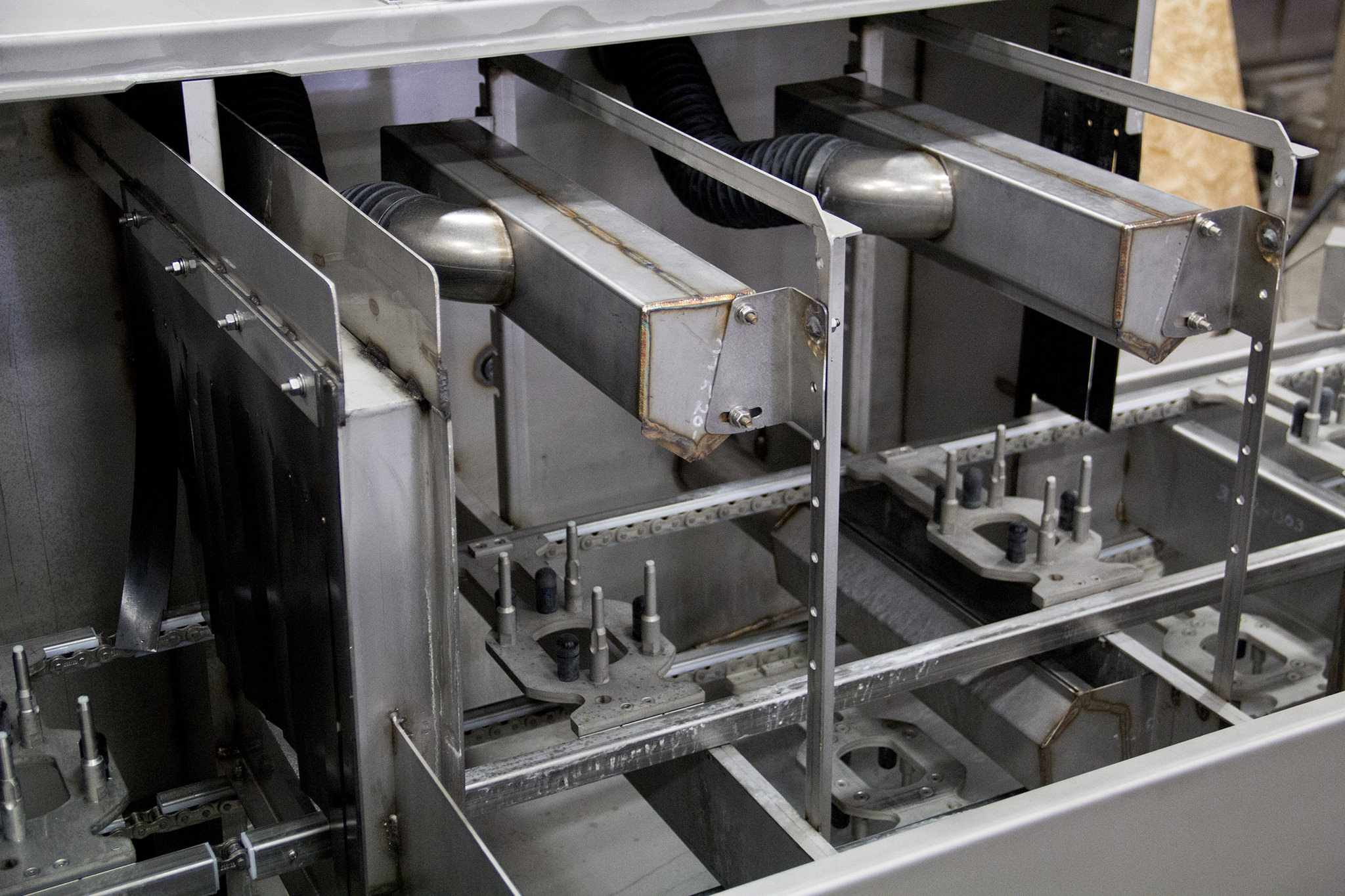
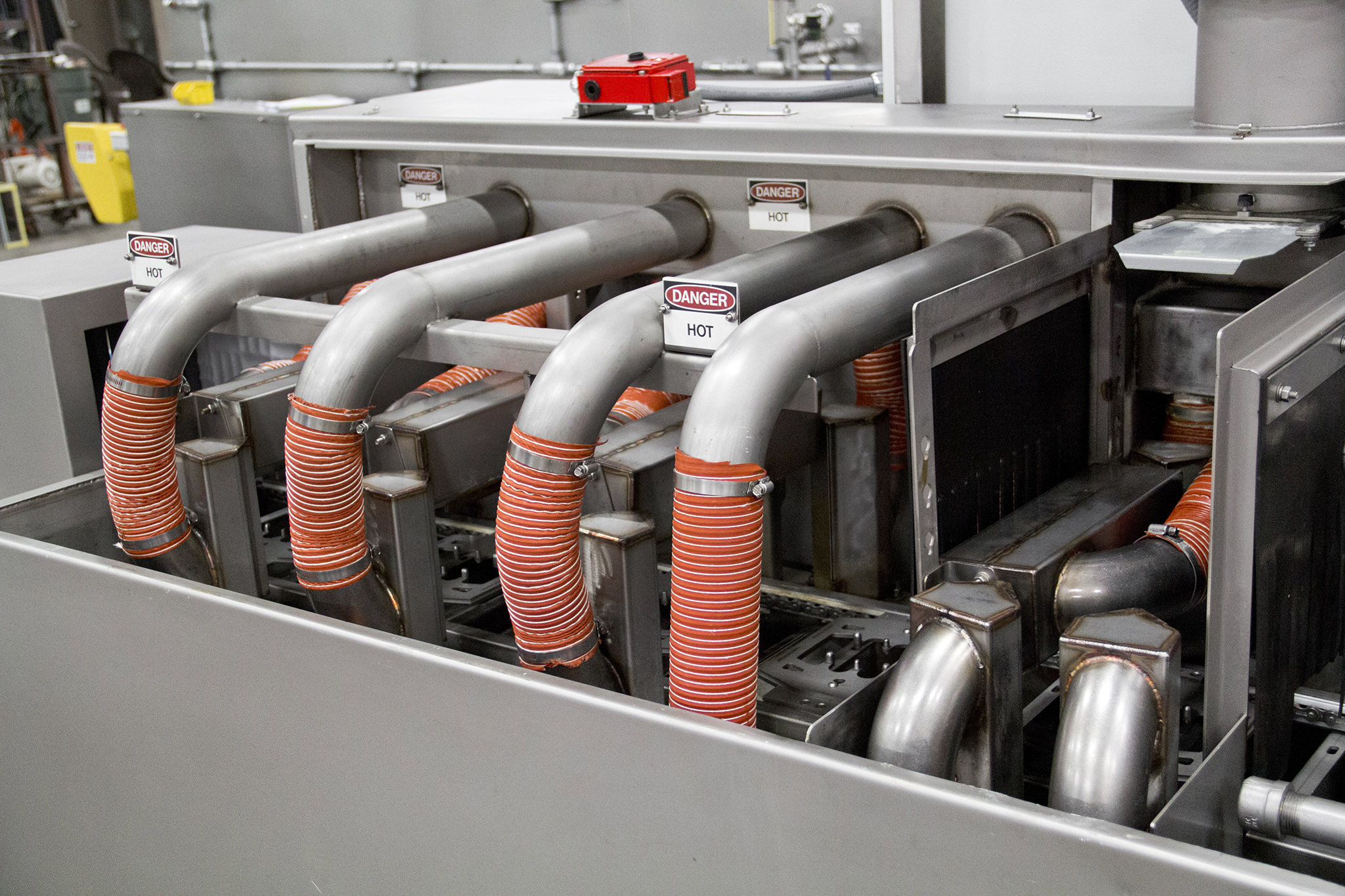
Ambient Blow-Off System: An ambient blow-off blower utilizes the ambient air from within the facility. No additional heat is added to the air source. The pressure blower air intake draws in the air and routes it at moderate pressure (17″-21″ S.P.) through air plenums and/or air knives onto the parts to remove gross amounts of residual moisture. An ambient blow-off is utilized in applications when part dryness is not critical or when the part material has absorbed enough heat from the wash and/or rinse solution to help in the flash drying process. Residual moisture may remain on the parts upon exiting the parts washer, and the higher volume of air will require that more be exhausted from the machine. An ambient blow-off is ideal for drying industrial parts of varying heights. The utilization of an ambient blow-off is a cost-efficient solution to dry the parts.
Regenerative Blow-Off System: A regenerative blow-off blower intakes the ambient air from within the facility and directs high-pressure air (40″-50″ S.P.) to one or more air knives. The design of the blower elevates ambient air temperature by approximately 30° to 40° F. The warm air is unregulated and cannot be adjusted by the operator. The high-pressure air flow aids in stripping gross amounts of residual moisture while the heated air helps evaporate moisture from the parts. A regenerative blow-off is utilized in applications when the majority of the part surface needs to be dry, but some residual moisture may remain in blind/tapped holes. This is most ideal for drying industrial parts of similar height. Flash drying can also be used in conjunction with the regenerative blow-off to further aid in the drying process. Regenerative blow-offs are typically sized for higher air pressure with lower air volume (CFM). With lower air volume, there is less air to exhaust from the cleaning system. The utilization of a regenerative blow-off provides a balanced solution between the cost-efficiency of an ambient blower, while providing better industrial parts drying results.
Heated Blow-Off System:: The heated blow-off pressure blower utilizes air from inside the machine and recirculates it over a closely regulated heat source installed within the blow-off module, either electric heating elements or a natural gas burner. The temperature range is adjustable from ambient up to approximately 250° F. A heated blow-off blower runs at lower pressure than both an ambient and regenerative blower (12″-14″ S.P.) The heated air is delivered in the same manner as in the ambient blow-off package. The combined use of air plenums and/or air knives and the heated air helps to remove gross amounts of residual moisture and then evaporates any remaining moisture from the part surfaces. The heated blow-off zone is fully insulated and cladd to maintain heat consistency and to protect the machine operator. A heated blow-off is utilized in applications where part dryness is critical upon exiting the parts washer.
Alliance engineers have the experience to effectively incorporate the correct blow-off solution that will provide the desired part dryness results the customer is looking for in their industrial parts cleaning system.